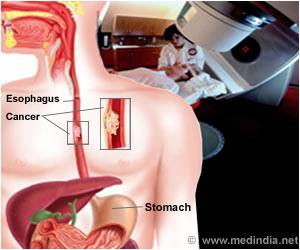Early and repeated exposures to diagnostic imaging, namely X-rays and CT scans, may boost testicular cancer risk.

‘Radiation is a known risk factor for cancer due to its ability to damage DNA. When cells are unable to repair damaged DNA appropriately, cancer-causing genetic mutations may result.’





In men, the increased use of diagnostic radiation below the waist over that same time may contribute to the testicular cancer rise in incidence. Kevin Nead, MD, who conducted the study while in the department of Radiation Oncology at Penn and is now at MD Anderson Cancer Center, serves as the lead author.
Testicular germ cell tumor is the most common cancer in the United States and Europe in men between the ages of 15 and 45. The incidence rate has increased from about three out 100,000 men in 1975 to six out of 100,000 men today. Nearly 9,500 cases will be diagnosed by the end of 2020.
Researchers conducted an observational study of 1,246 men between the ages of 18 and 55 with and without testicular cancer at Penn Medicine.
The participants completed a questionnaire that elicited information on known and presumptive risk factors for testicular cancer and diagnostic imaging during their lifetime, including the location on the body and number of exposures, prior to their diagnosis. Tumor samples were also collected.
Advertisement
People with three or more exposures to diagnostic radiation had a 59 percent increased risk of testicular cancer than individuals with no exposures to diagnostic radiation.
"If our results are validated, efforts to reduce medically unnecessary and avoidable testicular exposure should be considered, in part through efforts to reduce radiation dose and optimize shielding practices when appropriate," the authors wrote.
Source-Medindia















